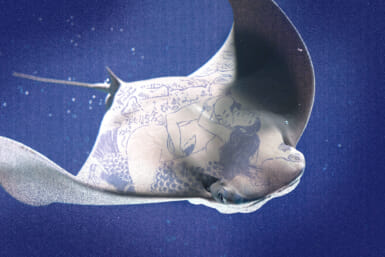With the Oscars scheduled for this weekend, we thought we’d concentrate on films for our latest List of 7. None of the movies below were ever nominated for an Academy Award, but they certainly all left a significant mark. Featuring directors such as Nagisa Oshima and Takashi Miike, here’s a look at some of the most controversial Japanese films ever made. The focus is on feature-length flicks only, so shorts such as Shuji Terayama’s Emperor Tomato Ketchup, the inspiration for Stereolab’s fourth studio album, and Lost Youth, a story that exposes the dark side of Tokyo, are not included.
1.
The Human Condition (Masaki Kobayashi)
A nine-and-a-half-hour epic released in three installments, The Human Condition is an indictment of Japan’s wartime atrocities and, as a result, film studios here wanted nothing to do with it. That included Shochiku, who eventually relented when director Masaki Kobayashi threatened to quit the company. The story is based on Junpei Gomikawa’s best-selling six-volume novel, though, in many ways, it is also an autobiographical tale by Kobayashi. As with the central character Kaji (Tatsuya Nakadai), he was drafted into the military in Manchuria and also ended up as a prisoner of war.
In The Human Condition, the pacifist Kaji experiences a personal existential tragedy as he witnesses the horrors of the brutal conflict. This begins as a labor camp supervisor before he becomes an Imperial Army soldier and is then captured by the Red Army. Despite having three parts — No Greater Love (1959), Road to Eternity (1959) and A Soldier’s Prayer (1961) — most critics consider it as a single work. “Unquestionably the greatest film ever made,” is how British writer David Shipman described it in his book The Story of Cinema.
2.
In the Realm of the Senses (Nagisa Oshima)
When In the Realm of the Senses premiered at the Cannes Film Festival in 1976, demand was so high that 13 screenings were arranged, a record that remains to this day. The most famous, though not necessarily the best film of Nagisa Oshima’s illustrious career, it has never been shown uncensored in Japan. Despite being edited in France to avoid censors here, Oshima still ended up in court due to a book he published that included the movie’s screenplay and 24 photographic stills which were deemed obscene. After a four-year trial, he was acquitted.
The film is based on one of the most notorious crime stories in Japanese history involving former geisha Sada Abe. After starting an affair with Kichizo Ishida in 1936, she ensured no other woman would touch him again by strangling him to death. She then cut off his penis and testicles, before carrying them around with her in a handbag. The film contains scenes of unsimulated sexual activity, including acts between leading actors Eiko Matsuda and Tatsuya Fuji. “Nothing that is expressed is obscene,” said Oshima during his trial. “What is hidden is obscene.”
3.
Mishima: A Life in Four Chapters (Paul Schrader)
Directed by Paul Schrader with George Lucas and Francis Ford Coppola as executive producers, this is technically an American film, but we’ve included it as the language is Japanese and so are most of the cast. It was also set in Japan, but never actually released either theatrically or on video here. The biopic was due to be screened at the Tokyo International Film Festival in 1985, but an alleged bomb threat prior to the screening put paid to that idea. Far-right extremists also threatened physical violence against anyone distributing the movie.
Mishima was an iconic figure for these radicals, who were particularly opposed to the portrayal of him as a homosexual. His widow was too and subsequently boycotted the film after initially cooperating with Schrader. It was eventually shown on television in Japan with the gay bar scene omitted. Starring Ken Ogata (Ken Takakura reportedly pulled out due to pressure from nationalists), it’s a fictionalized account of Mishima’s life featuring segments from his books, The Temple of the Golden Pavilion, Kyoko’s House and Runaway Horses. The last chapter is then all about his final day.
4.
Audition (Takashi Miike)
When it comes to controversial Japanese films, one name that immediately comes to mind is Takashi Miike. The prolific filmmaker with over 100 director credits to his name has regularly shocked audiences with releases such as Ichi the Killer, which caused some viewers at cinemas to throw up and others to faint, and Visitor Q, a satirical comedy filled with incest, rape, necrophilia and other disturbing themes. This list could have been made up purely of his movies, but instead we just opted for his most famous one: Audition.
Based on Ryu Murakami’s novella, the film begins like a romantic comedy. Shigeharu (Ryo Ishibashi), a man in his 40s who’s mourning the death of his wife, is encouraged by his 16-year-old son Shigehiko (Tetsu Sawaki) to remarry before he gets too old. His movie producer friend subsequently arranges a mock audition to find him a new woman. He chooses Asami (Eihi Shiina), a decision he would live to regret. It’s a slow build to what is truly an unsettling final act. Audition had a record number of walkouts at the 2000 Rotterdam Film Festival.
5.
Battle Royale (Kinji Fukasaku)
Many countries refused to release Battle Royale, the last film Kinji Fukasaku completed, because of the intense violence perpetrated by high school students. The Japanese government also tried to ban it along with Koushun Takami’s novel on which it’s based. Similar to A Clockwork Orange in 1971, this simply added to the intrigue and the movie became a cultural phenomenon. One of its biggest fans is legendary director Quentin Tarantino. “If there’s any movie that’s been made since I’ve been making movies that I wish I’d made, it’s that one,” he once said.
Set in the near future, the story follows 42 ninth graders who are kidnapped by a totalitarian government. Sent to a desert island, they’re forced to fight for their lives under the “Battle Royale” act, adopted to curb juvenile delinquency. Each person is fitted with an explosive collar that will kill them if they break the rules. Only one member can survive. A huge hit, it was the third highest grossing film in Japan in 2001. Fukasaku died of prostate cancer after shooting just one scene of the sequel with Takeshi Kitano.
6.
Suicide Club (Sion Sono)
Sion Sono is unquestionably one of the most controversial figures in the Japanese film industry. Last year, two unnamed female actors accused him of sexual assault in Shukan Josei magazine. He later sued the publication for inaccuracies, though rumors about his conduct continue to plague his career. As a director, he’s known for his transgressive verve. A man who flouts convention, he creates movies that are unpredictable, surreal and hyper-violent. This, of course, includes his breakout feature film Suicide Club, which Sono believes, “almost all Japanese people hate.”
It begins with the shocking mass suicide of more than 50 schoolgirls. Leaping onto the train tracks, we see blood and guts scattered everywhere. Two nurses then jump out of a hospital window for no apparent reason. These incidents are followed by a wave of peculiar suicides, mostly involving young people, that detective Kuroda (Ishibashi) and his team investigate. Suicide Club, though, is not a typical mystery story and leaves several questions unanswered. Sono’s 2006 movie Noriko’s Dinner Table, set before, during and after the previous installment, attempts to resolve some of those questions.
7.
Yasukuni (Li Ying)
A documentary about a Shinto shrine with 90-year-old swordsmith Naoji Kariya as its main character doesn’t sound particularly controversial. Yasukuni, though, is no ordinary shrine. Founded by Emperor Meiji in 1869, it commemorates soldiers who died while serving Japan. Among those remembered are 1,068 individuals convicted of war crimes, including 14 “Class A” war criminals. It’s also a shrine within which 8,100 Yasukuni swords were manufactured between 1933 and 1945. These were used to kill Chinese soldiers. Director Li Ying takes an in-depth look at this sword-making tradition.
It took the Chinese man 10 years to complete the documentary, but he was then unable to attend the screenings, having received death threats from right-wing groups. His production company Dragon Films was also threatened and consequently moved from its Tokyo office. Pressured by ultra-nationalists, several theaters in Japan’s capital decided against showing the film on its official April 12 launch. It was eventually shown in Tokyo in May 2008 amidst tight police security. Li said he hoped the movie would help cure Japan of what he saw as “postwar syndrome.”









